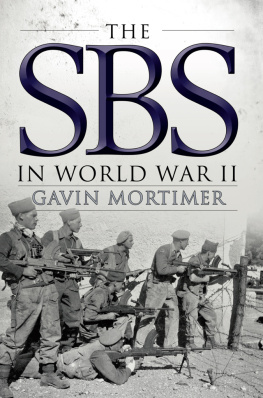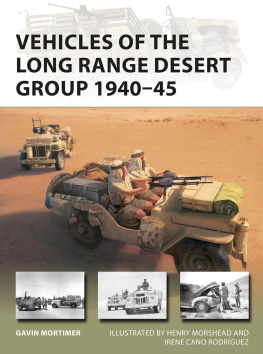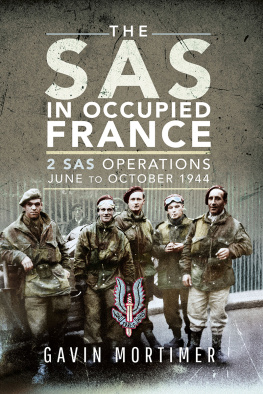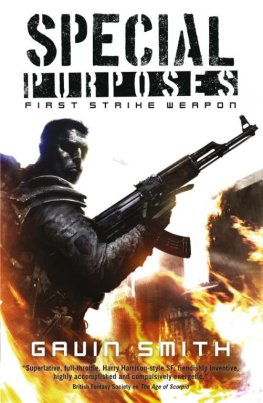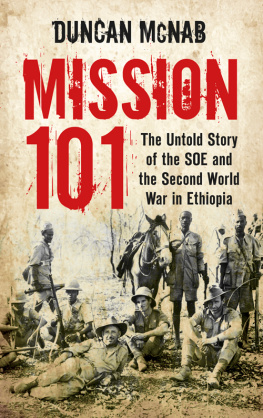Merrills Marauders

The Untold Story of Unit Galahad and the Toughest Special Forces Mission of World War II
Gavin Mortimer

First published in 2013 by Zenith Press, an imprint of MBI Publishing Company, 400 First Avenue North, Suite 400, Minneapolis, MN 55401 USA
2013 Zenith Press
Text 2013 Gavin Mortimer
All photographs from the Merrills Marauders Association unless otherwise noted.
All rights reserved. With the exception of quoting brief passages for the purposes of review, no part of this publication may be reproduced without prior written permission from the Publisher. The information in this book is true and complete to the best of our knowledge.
Zenith Press titles are also available at discounts in bulk quantity for industrial or sales-promotional use. For details write to Special Sales Manager at MBI Publishing Company, 400 First Avenue North, Suite 400, Minneapolis, MN 55401 USA.
To find out more about our books, join us online at www.zenithpress.com.
Digital Edition: 978-1-61058-902-4
Softcover Edition: 978-1-90641-781-9
Library of Congress Cataloging-in-Publication Data
Mortimer, Gavin.
Merrills Marauders : the untold story of Unit Galahad and the toughest special forces mission of World War II / Gavin Mortimer.
pages cm
Includes bibliographical references and index.
ISBN 978-0-7603-4432-3 (hc)
1. United States. Army. Composite Unit (Provisional), 5307th. 2. World War, 1939-1945--Regimental histories--United States. 3. World War, 1939-1945--Underground movements--Burma. 4. World War, 1939-1945--Campaigns--Burma. 5. Myitkyina (Burma)--History, Military--20th century. I. Title.
D769.315307th .M67 2013
940.54850973--dc23
2013020172
Editorial Director: Erik Gilg
Editor: Caitlin Fultz
Design Manager: James Kegley
Layout: Brenda Canales
Cover design: Jason Gabbert
When You Go Home, Tell Them Of Us And Say,
For Their Tomorrow, We Gave Our Today
Inscription on the Kohima 2nd Division Memorial in India, close to the Burma border, in recognition of the Allied soldiers who sacrificed their lives in 1944
List of Maps
Contents
TIMELINE

1943
August 1924: Quebec Conference decision to assign a three thousand-strong Long Range Penetration force to Southeast Asia.
September 1: General George Marshall, chief of staff of the Army, issues a call for volunteers for a dangerous and hazardous mission under the classified code name Galahad.
September 21: Casual detachments 1688A and 1688B, composed of volunteers serving in Trinidad and the Continental United States, depart San Francisco on the Lurline.
October 2: The Lurline arrives in New Caledonia to collect Casual Detachments 1688C, combat veterans of the Pacific.
October 29: The Lurline reaches Bombay, India.
November 117: The men of the 1688th Detachment train at Deolali, a British transit camp.
November 1920: The detachments transfer to Camp Deogarh in Bengal Province and undergo further training under the command of lieutenant colonels Francis Brink and Charles Hunter.
December 31: Admiral Mountbatten, head of SEAC, agrees to transfer control of the 1688th Detachment to Lt. Gen. Joseph Stilwells Northern Combat Area Command.
1944
January 1: The 1688th Detachment is reconstituted the 5307th Composite Regiment (Provisional) in General Order No. 1. General Order No. 2 confirms Colonel Hunter as the 5307ths commanding officer. General order No. 3 subsequently reconstitutes them as the 5307th Composite Unit (Provisional).
January 3: The 5307th is officially released from South East Asia Command and assigned to Stilwell.
January 4: Brigadier General Frank D. Merrill is appointed by Stilwell commanding officer of the 5307th, with Hunter, his second in command.
January 2628: The 1st, 2nd, and 3rd battalions begin moving to Ledo in Assam. They will complete the movement by February 9.
February 921: The 5307th marches 140 miles to their jumping-off point at Ningbyen in northern Burma.
February 18: The advance elements of the 5307th arrive at Shingbiyang in Burma.
February 24March 7: First Mission: The 2nd and 3rd battalions set up blocks along the Kamaing Road near Walawbum.
February 25: Robert Landis is the first volunteer killed in combat.
March 12April 7: Second Mission: The 1st Battalion sets up a block near Shaduzup.
March 1225: Second Mission: The 2nd Battalion and Khaki Combat Team, 3rd Battalion set up a block near Inkangahtawng.
March 28: The 2nd Battalion withdraws to Nhpum Ga and General Merrill suffers his first heart attack, causing his evacuation from Burma. Colonel Hunter assumes command of the Marauders.
March 31: The 2nd Battalion is cut off from the 3rd Battallion, and the siege of Nhpum Ga begins.
April 9: The 3rd Battalion breaks through to Nhpum Ga to break the siege.
April 28May 16: Third Mission: The Marauders, supplemented by Chinese troops and Kachin guerrillas, are organized into H Force, K Force, and M Force and tasked with crossing the Kumon Mountains and seizing the airstrip at Myitkyina.
May 17: H Force under Colonel Hunter seizes the airstrip, but no attempt is made to take Myitkyina itself.
May 19: Merrill suffers a second heart attack. He eventually will be transferred to the SEAC staff in New Delhi.
May 20: A Chinese attack on Myitkyina ends in failure when they open fire on each other on the outskirts of the town.
May 2131: K Force and M Force arrive in the Myitkyina area, and the evacuation begins of several hundred sick and exhausted Marauders.
JuneJuly: American reinforcements, known as New Galahad, are flown in to help defend the airstrip and to help the approximately two hundred original Marauders, known as Old Galahad.
August 3: Myitkyina is taken by American and Chinese troops, including the last remnants of the Marauders.
August 3: Colonel Hunter is relieved of his command and ordered home.
August 10: The 5307th Composite Unit (Provisional) is dissolved. The remaining Marauders are reorganized into the 475th Infantry Regiment.
PROLOGUE

Back into Burma
A pril 1943. Two thousand British soldiers stagger from the steaming jungle of northern Burma. Bleeding, emaciated, worn out, these men are the remnants of the 77th Brigade. For two months, theyve been fighting a primitive guerrilla campaign against the Japanese army. They are the survivors. One thousand of their comrades remain in the jungle, victims of the enemy, victims of disease, victims of hunger.


